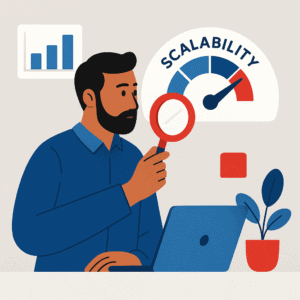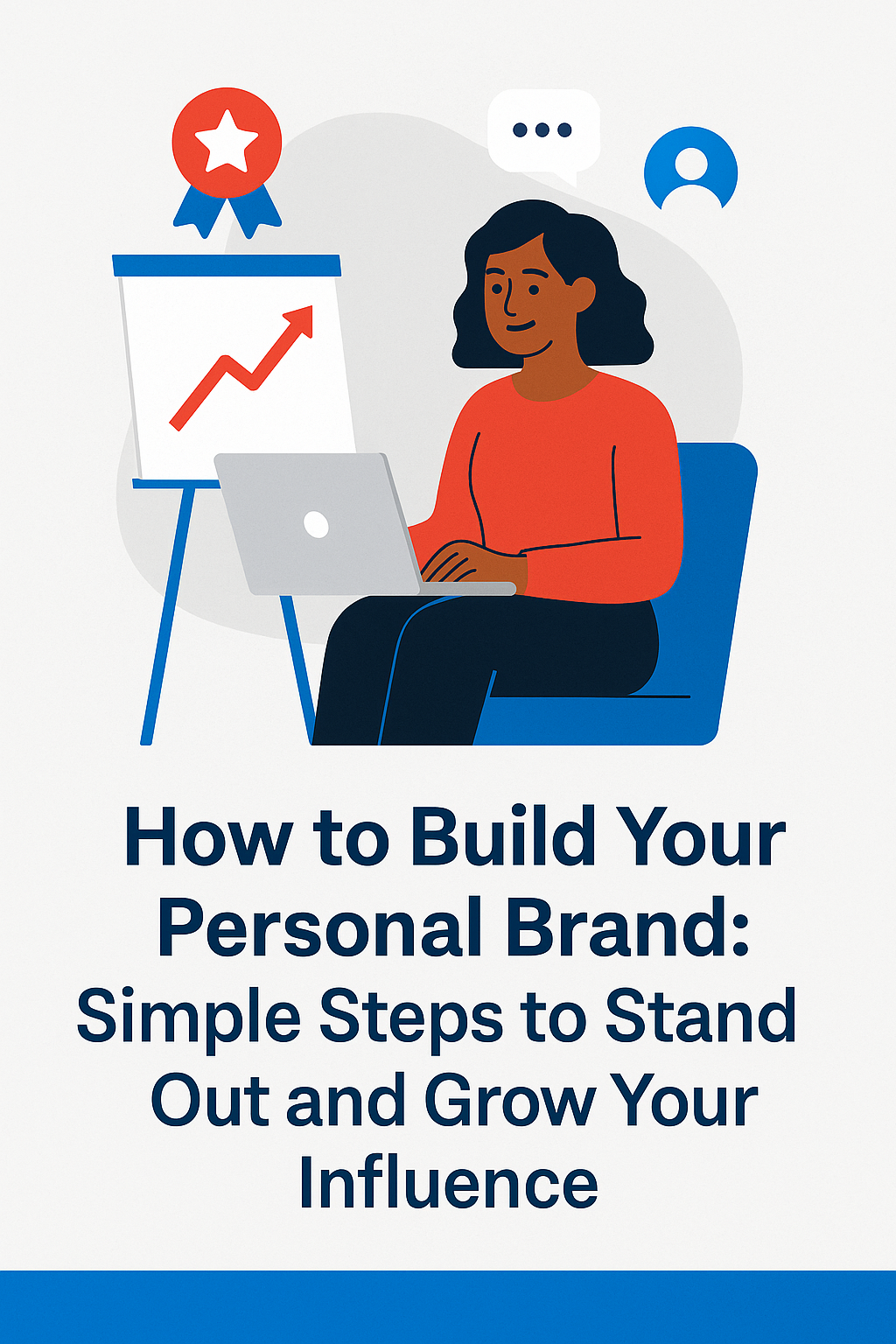Startup Saturdays
Starting a business is one thing. But building something that can grow without you doing everything yourself—that’s the difference between just surviving and actually scaling.
When I started Backbone America, I didn’t have scalable systems. I was doing everything manually: onboarding, fulfillment, even the follow-up emails. I remember reaching out to a marketing guy early on—he had a $3K minimum for his services. At the time, that was way out of reach. But what really stuck with me wasn’t the price. It was what he said after: “If I help you bring in tens of thousands, wouldn’t that make my fee worth it?”
And I’ll be honest—I froze. Not because I didn’t want the money. But because I couldn’t handle that kind of volume. My business wasn’t structured to scale. Even if leads came pouring in, I didn’t have the systems to catch them.
That moment taught me something that reshaped how I think about scalable business ideas: it’s not just the idea itself. Most business models can scale. But if you don’t have the tools, the capacity, or the clarity to manage growth, you’ll end up stuck in the same place—just more overwhelmed.
This post is about what makes a business actually scalable. And how to choose an idea that fits your life now, but can also grow with you later.
What Makes a Business Actually Scalable?
Scalable business ideas aren’t just about picking the “right” industry or trend. They’re about how you design and supportyour offer—so it can grow beyond your personal capacity.

In the simplest terms, a scalable business is one where the effort doesn’t grow in direct proportion to your revenue. That means you can serve more people, make more money, or both—without burning out or hiring a huge team right away.
Here’s what I’ve learned: most business ideas can be scalable. But it’s the structure, systems, and support that determine whether they’ll stay small or expand.
Let me give you an example.
When I first launched my business, every client interaction passed through me. Intake, onboarding, follow-up, delivery. I wasn’t building a business—I was creating a job for myself. And that’s what a lot of people accidentally do when they start. The idea might be solid, but without automation or standardization, it quickly becomes unmanageable.
True scalability comes from:
Offers you can deliver repeatedly without reinvention
Clear processes that don’t depend on your daily presence
A customer experience that doesn’t fall apart when you’re at capacity
And most importantly? A mindset that plans for growth—even when you’re just starting out.
5 Scalable Business Ideas That Actually Work
Some business models lend themselves more naturally to growth—but here’s the secret no one tells you: most ideas can become scalable business ideas if you structure them right.
These aren’t just theories. They’re models I’ve tested, studied, or supported—either in my own business or in work with founders building their first offers.
1. Digital Product Businesses
These are rooted in what you already know. People kept telling me what was holding them back—mindset, not knowing the steps to start, and getting lost in the weeds of business tools and systems. I listened.

So I packaged what I knew into something repeatable.
As a business process automation engineer, I could also see where automations and process shifts made the difference between someone starting strong—or stalling out completely. That’s how the guides, templates, and courses I offer now came to be.
If you’re constantly answering the same questions or giving the same advice, that’s your first signal: you might already be sitting on a scalable offer.
2. Productized Services
This was a game-changer for me. My done-for-you and done-with-you services are set up as clear packages—with SOPs, QRCs, and automation built in.
Even if I’m not available, there are instructions assistants can follow. Automated data collection systems make sure I’m not chasing down details later. That’s what makes it scalable—not because I’m doing less work, but because the delivery doesn’t depend entirely on me.
If you currently sell custom services, think about what you repeat most often. Can you standardize the process? Set a fixed price? Build intake systems that save you time? Delegate tasks to others?
That’s how a small service business becomes a scalable operation.
3. Membership or Subscription Models
This is a model I’m still exploring myself—but the concept is simple and powerful.
Instead of selling one-time offers, you create a monthly experience: a community, exclusive content, behind-the-scenes insights. Something people want to stay connected to. When done right, it creates recurring revenue and builds deep relationships at scale.
Even a low-cost membership can be a solid foundation if it helps people solve a problem they care about. Tools like Substack and Patreon make it easier than ever to start small and grow into this model.
4. Affiliate or Content-Driven Platforms
If you have a niche you love and a clear voice, this model scales through audience building. Niche blogs, newsletters, review channels—anything that creates content once and earns revenue over time.
The backbone here is trust. Your audience needs to believe that what you recommend or link to has real value. But the great part? Your content keeps working in the background—bringing in traffic and passive income long after you’ve published it.
This is one reason I’m so intentional with my blog at Backbone America. Every post has the potential to reach someone who’s stuck where I once was—and guide them to a next step.
5. Time-for-Money Services (with Scalable Potential)

Let’s be honest: not every business starts out scalable. Many of us begin by trading time for money—coaching, consulting, freelancing. I did too.
But I learned something valuable when my ex-husband and I considered taking over his brother’s appliance repair business. His brother worked alone, occasionally hiring help. I ran the numbers—and the pattern was clear: revenue was flat because he was the only technician. If he didn’t work, the business didn’t earn. But once we looked at what it would take to hire just one or two additional techs, it changed everything.
Three techs meant we could earn income even if my ex-husband never picked up a tool. The business became scalable not by changing the service—but by building the infrastructure to support growth.
That’s the heart of scaling a time-based service:
Document your process so others can follow it
Automate what you can—onboarding, prep, follow-up
Shift from hourly to fixed-scope work where possible
Hire help when your demand exceeds your availability
Scalability doesn’t always mean stepping away. Sometimes it means stepping above—becoming the architect instead of the technician. And yes, often it means becoming an employer.
You’re still offering a valuable service. But now, it can run even when you’re not the one doing all the work.
How to Choose a Scalable Idea That Fits Your Life
It’s easy to get swept up in the hype. You read about scalable business ideas and think you need to build the next big platform, hire a team overnight, or automate every inch of your operations by Friday. But the truth? The right scalable business is the one that matches your goals, bandwidth, and values.
In other words, it has to make sense not just on paper—but in your real life.
When I was first evaluating what Backbone America could become, I wasn’t just thinking about market trends or competitors. I was asking myself:
What kind of work drains me?
What kind of work energizes me?
How much structure do I want in my week?
Do I want to manage people, or stay solo for now?
Because here’s the thing: just because something can scale, doesn’t mean it should—not if it’s going to turn your dream into another job you hate.
A lot of founders miss this. They pick an idea that looks scalable but doesn’t fit—and six months later, they’re burned out or ready to quit. I’ve been there. That’s why now, before building out a new offer, I gut-check the model against my life. Not my fantasy schedule—my actual day-to-day.

If you’re not sure what fits yet, that’s okay. Start by identifying:
The types of clients or customers you want to serve
The kinds of problems you know how to solve
The hours you’re willing (or unwilling) to work
The income goal that would make a difference right now
Tip: My 31-Day Business Startup Challenge was built to help you figure out what business model makes sense for you—not just what looks good online.
You don’t have to have the whole thing figured out. You just need a starting point that doesn’t ignore your reality. That’s what makes the next step sustainable.
Start Lean, But Build to Grow
In the early stages, it’s tempting to try and build out every piece of your business up front—especially if you’re thinking long-term. Branding. Funnels. Courses. Client portals. The works.
But trying to scale before you’ve validated your offer? That’s where a lot of people get stuck.
I get it. When I first launched Backbone America, I thought I had to look established to be taken seriously. So I overplanned. Overbuilt. I spent more time prepping than actually selling. And then I realized—none of those systems mattered if the offer wasn’t landing.
What worked was starting lean:
A simple landing page
A clear offer
A direct way for people to say “yes”
From there, I iterated. I built automations only after I’d repeated a task enough times to justify it. I created digital resources only after I’d answered the same question three or four times. I didn’t scale just to scale—I scaled what was working.
That’s the power of a lean startup mindset: You test small. You systemize what works. You grow on purpose.If you want help building that kind of foundation, the Lean Startup Business Plan post breaks it down in plain English—no fluff, just structure that helps you take action.
And here’s the unexpected bonus: starting lean doesn’t mean thinking small. It means building with clarity—so that when the growth comes, you’re actually ready for it.
You Don’t Have to Scale Alone
Scalability isn’t just about profits or processes—it’s about possibility. The possibility of building something that lasts. Something that grows with you instead of draining you. Something that gives you time, income, and impact—on your terms.
But I’ll be honest: it’s hard to do that in a vacuum.
When I was deep in the weeds—managing weekly blog posts, email campaigns, product content, client work, and marketing. Ugh. The idea of going back to those days fills me with a little anxiety. I felt like I was always behind. Overwhelmed didn’t even begin to describe it. I kept telling myself I couldn’t afford help. But what I really couldn’t afford was not to make a change.
Giving myself permission to invest in me changed everything.
Once I hired support, I could finally breathe. I wasn’t just catching up—I was moving forward. I wasn’t stuck at my desk while everyone else was on vacation. I could rest without guilt. And my business didn’t fall apart. It actually got stronger.
That’s the real power of scalability. Not just systems and strategy—but space. Space to grow. Space to lead. Space to live.
You don’t have to do this all alone. You don’t need a perfect plan, just a clear, honest one—and the willingness to take the first step.
Ready to start a business that won’t box you in later?
Join the 31-Day Business Startup Challenge and take the first steps toward launching a business that fits your life—with structure, clarity, and room to grow.





